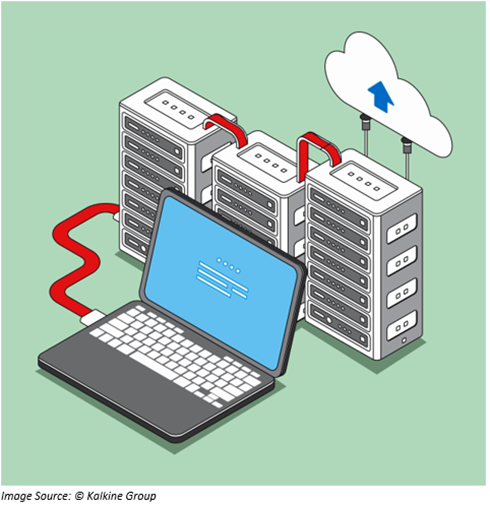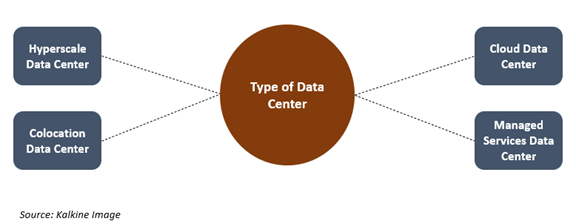What is a Data Center?
A data center is a building, or a self-contained unit within a building, which is used by organizations to shelter computer equipment like servers, associated components like telecommunications, storage system and network. A data center design is based on the network of computing and storage resources that enable the delivery of shared applications and data.
A data center has assured power supply with high bandwidth connectivity. Resilience is crucial, so redundancy of network, power and other infrastructures is common in maintaining continuity. It also has building management controls that are necessary to ensure that the facility and the data in the facility remain safe. These management controls comprise an air conditioner to maintain a certain level of temperature and humidity within the premises, and various security measures to protect the data.

What is a modern data center?
The data centers that existed earlier were quite different from the ones that exist at present. We can now see that the infrastructure has shifted from on-premises physical server to a virtual network. These virtual networks provide applications and workloads across various physical infrastructure plus the multicloud environment.
These days, the data is connected across several data centers, both public and private cloud, and the edge. The role of a data center here is to initiate communication within these multiple data centers in the cloud and on-premises.
The cloud is said to be a collection of data centers. It is because when an application is put on the cloud, they use the data center resources from the cloud provider.
What is the importance of a data center to businesses?
Data centers, in present times, are highly critical and are designed to support business applications and activities that comprise:
- Sharing of email and file.
- Productivity applications.
- Customer relationship management.
- Enterprise resource planning and databases.
- Artificial intelligence (AI), machine learning (ML) and big data.
- Virtual desktops, communications, and collaboration services.
Also Learn About: Data analytics and Data Mining.
What are the Main Parts of a Data Center?
The design of data centers usually differs based on the cloud providers offerings or the requirement of the particular organization. In general, a data center includes infrastructures such as routers, switches, firewalls, storage systems, servers, and application delivery controllers that work together to support the business and also provide access to applications and distribute workload across various machines. This allows an efficient and smooth operation.
Overall, the data center infrastructures provide users with:
- Network infrastructure to connect end-users with the data center, services, storage plus the external connectivity.
- A storage infrastructure which can be used for storing and managing data that is needed for daily operational work.
- Server process, memory space, local storage, plus network connectivity that drives business applications.
How does a data center operate?
Data centers are built to safeguard the performance and integrity of the core data center parts. These include:
Network security appliances:
Network security appliances comprise of firewall and intrusion protection that is important for protecting the data center.
Application delivery assurance:
To maintain the performance of an application, the mechanism offers application resiliency plus accessibility via load balancing and automatic failover.
What are the main categories of data centers?
Broadly, there are four types of data centers. These include Hyperscale, Colocation, Cloud and Managed services data centers. Let us know them individually.

Hyperscale Data Center:
Hyperscale Data Center is also known as Enterprise Hyperscale. It is a facility owned by the Company it supports and is optimized for their end-users. Some of these companies include AWS, Microsoft, Apple, and Google.
These data centers provide strong, scalable applications plus storage services to businesses as well as individuals. Hyperscale computing is essential for big data and cloud storage.
Colocation Data Center:
In a Colocation Data Center, the Company rents a space within a data center owned by others, and the data center is not within the office premises. Colocation Data Center comprises of one data center owner who sells space, power, and cooling to different businesses in a particular region.
Colocation Data Center provides interconnection to SaaS like Salesforce and PaaS like Azure. These data centers help businesses to level up and grow them at a lower cost.
Cloud Data Center:
A cloud data center is not a physical data center which is located within the office premises but is an online data center. When data is being stored on cloud servers, it automatically gets fragmented and duplicated across different locations for secure storage. In case of any failure, the cloud service provider ensures the backup of all the data.
The cloud data services have a huge advantage over the traditional data centers, as they save a lot of financial resources because they do not require setting up of infrastructure.
Managed Services Data Center:
As the name suggests, these data centers are managed by a third party on behalf of the Company. Instead of buying the pieces of equipment or the resources to set up a data center, the companies lease them.
The demand for data centers has been on the rise across several countries with Australia being one of them. To know more, click here.
 Please wait processing your request...
Please wait processing your request...